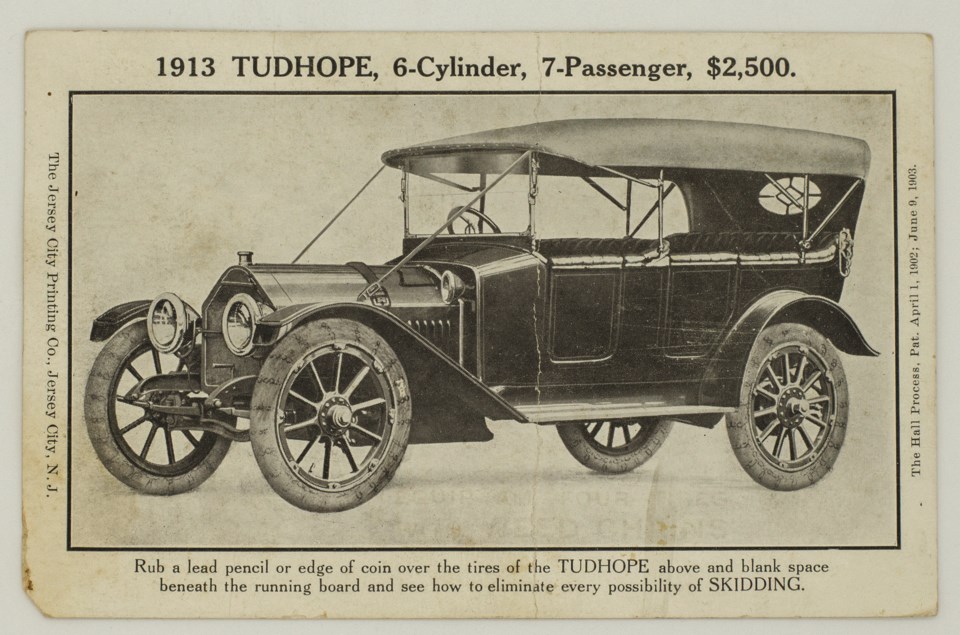Submitted by the staff of the Orillia Museum of Art and History (OMAH) and written by Larry Dickson, treasurer for the Orillia Heritage Centre
This is a novelty postcard used for advertising by the Tudhope Motor Co. Ltd.
It features a 1913 Tudhope model 6-48 and invites the reader to “Rub a lead pencil or edge of coin over the tires of the TUDHOPE above and blank space beneath the running board and see how to eliminate every possibility of SKIDDING.” This example has been ‘rubbed’ — to reveal chains on all four tires.
Tudhope automobiles are celebrated as artifacts from an era when Orillia was the largest industrial centre north of Toronto. Its cars were built for the Canadian climate. Automobile production in Orillia began in early 1909 at the Tudhope Carriage plant located south of Colborne Street between West and Andrew streets (the current site of Orillia’s city hall). The first models were ‘high wheelers,’ looking more like a carriage with a steering wheel than a car.
A disastrous fire completely destroyed the Tudhope plant on Aug. 22, 1909, leaving hundreds without a job. Despite several enticements from other municipalities, J.B. Tudhope quickly decided to rebuild in Orillia, and within nine weeks of the start of construction, a new plant was fully operational, re-employing between 75 and 100 local workers. Production of a new, more conventional model, the Tudhope-Everitt 4-36, began at the rebuilt plant.
1913 was the last full year of production for the Tudhope Motor Co. Ltd. The 6-48 was the flagship model — the largest and fastest of the cars made in Orillia. It boasted capacity for seven passengers, an electric starter and lights, and featured Canada’s first home-built six-cylinder engine.
Of all the output from Orillia’s industrial era — spanning lumbering equipment, boats, horse-drawn carriages, cutters and sleighs, farming equipment, mining equipment, baby carriages, ice cream scoops, and so much more — Tudhope automobiles are among the most cherished, perhaps because, like an old song, an old car invites people to revisit the past.
Next week, we will feature another object from the OMAH collection that showcases our local history.
